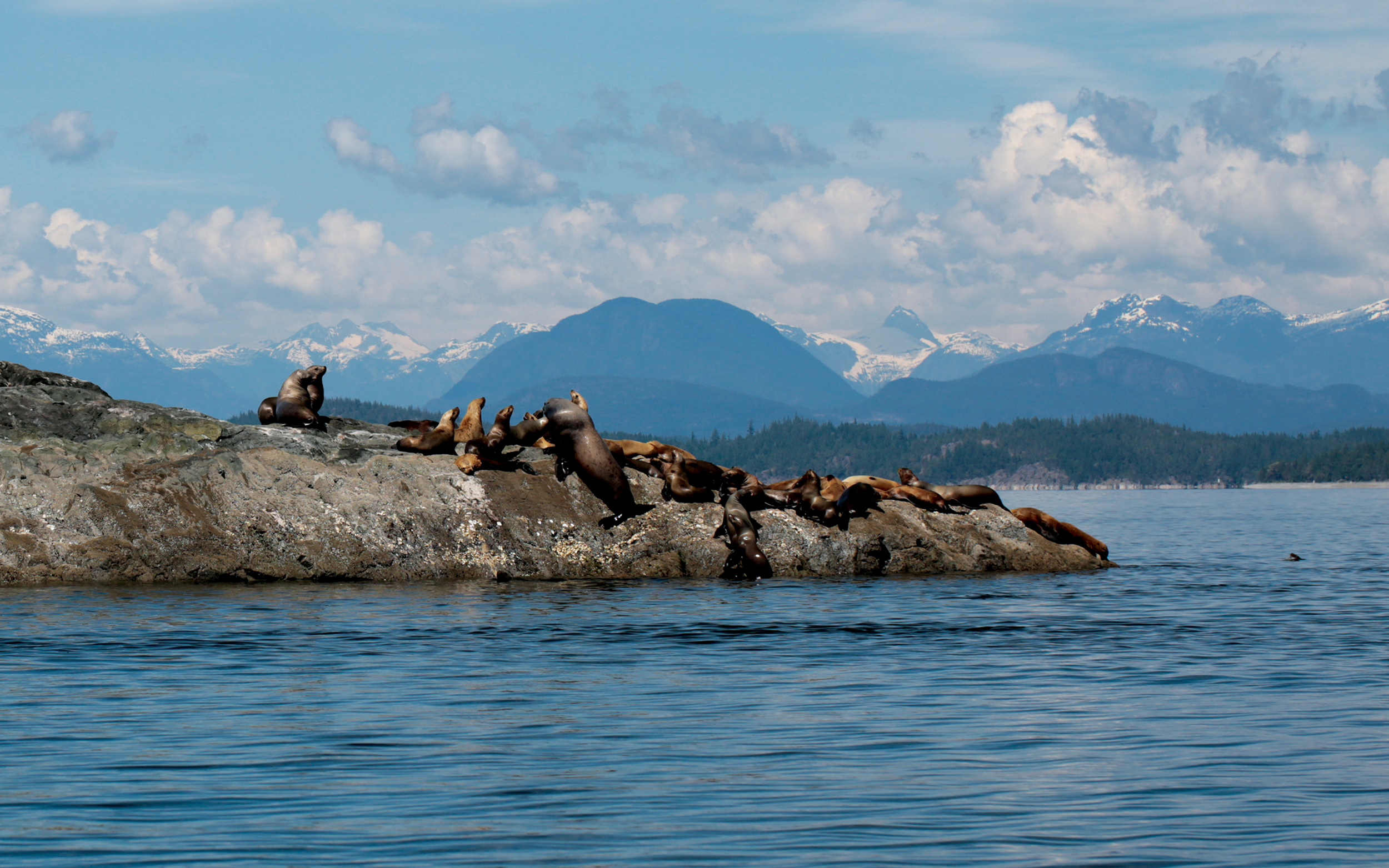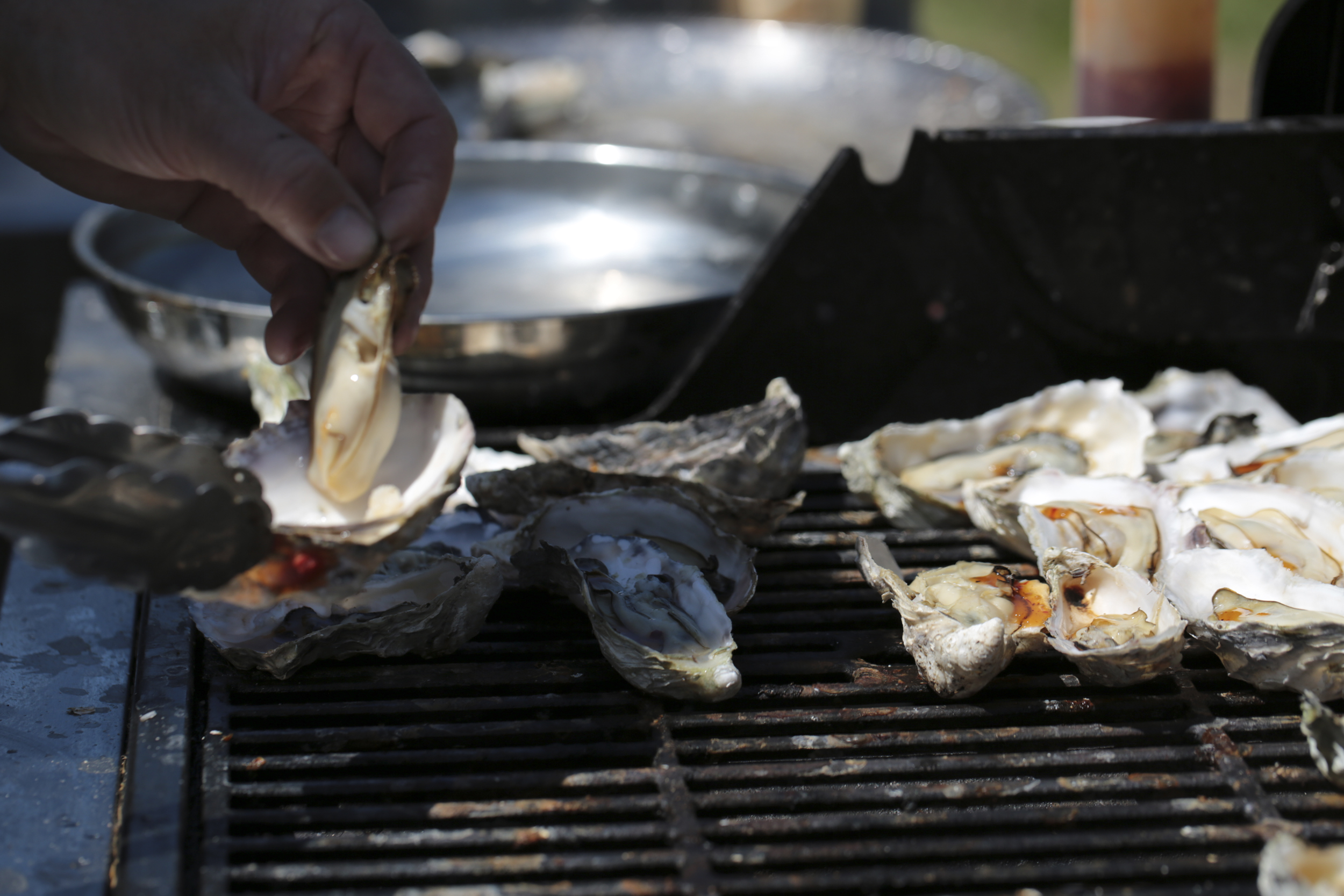A West Coast Oyster Experience
A stiff, cool breeze met a blue, cloudless sky as we walked down the dock to meet our trusty ship, Calm Seas. It was a beautiful day in Campbell River. As much as I love this Island and call it home, I haven't explored much around the Northern Island and surrounding archipelago. To embark on an adventure to see wildlife and experience the Discovery Islands while learning about local aquaculture and trying local fare, was about the best local adventure I could think up.
Captain Zach Pennock of Campbell River Eco Tours met us on the dock. Along with the other participants, we made seven on board, a great size for the boat and for conversation. Calm Seas had an indoor cabin that comfortably seated us, and outside deck space that seated five across the stern. The boat was roomy and the perfect home for our day on the water.
First things first, I loved that he handed the kids a scavenger hunt! As soon as we were out of the marina, it was go time—a 45-minute ride to Read Island. Captain Zach moved to Vancouver Island as an arborist, but once here he was called to a life on the ocean. Wanting to learn more about the area, he literally dove into the history and culture to understand the region. While we cruised, he shared many details of the islands, trees, coastal mountains and the area we were seeing.
Captain Zach had stories about his life on the water too. Most from when he became the proud owner of Calm Seas. The boat had a contract to support the coast guard, and he spent many nights responding to boats in distress, in the worst of weather, which has made him an extremely capable captain. He was thoughtful to ask how we were doing, if the speed was ok or waves too much.
As we were traveling, I tucked inside the cabin while everyone was enjoying the salt spray on the stern to ask a few oyster questions, as I love learning the details of the food I'm about to enjoy. The intersection of oysters and his life on the water occurred when Captain Zach fell in love with a local woman. Her family has been working in local aquaculture for generations; they are the founders of Sawmill Bay Shellfish Company. Captain Zach spent many summers working on the family oyster operation. I didn’t realize that this is the only oyster farm tour available from Campbell River and he created it with the intention to teach—and his love of oysters and aquaculture is certainly contagious!
Captain Zach explained how farming oysters is one of the most sustainable forms of aquaculture. Oysters are resilient and need little more than nutrient-rich water to grow. Being filter feeders, each oyster will effectively clean 50 gallons of water per day—the equivalent of a big bathtub. They are rich in protein and are an excellent source of minerals and vitamins. The oysters in these waters are the Pacific oyster. Their flavour is dependent on where and how they are grown (if they are spread on beaches or grown in deep water) and can change depending on the time of year, the type of plankton present and the water temperature. Consuming oysters as a main source of protein is also a way to have a climate-focused diet. (Apparently, if Americans replaced 10% of their beef intake with oysters, it would be the same as taking more than 10 million cars off the road, in terms of greenhouse gas emission reduction.)
As we pulled up to Read Island, we discovered these long rows of large tubes filled with small holes and big wheels at each end all attached to a floating dock system. Before we ventured over there, Captain Zach pulled us up to a dock and tied off the boat. As he pulled up a stack of large square mesh bags from the crystal-clear water, we could see starfish and anemones attached to the floats and deep rocks below. It was heavy work to pull up those bags, with each one half filled with oysters. He pulled some out so we could compare sizes and see how they looked. The oysters would live in the bags for two years to grow, and every two weeks, the bags needed to be flipped to allow the sun to clean the shells and naturally rotate the oysters. We could see how this process is very labour intensive and time consuming. We could also see many stacks of these empty bags laying on a platform closer to shore.
As we pushed away from the dock, Captain Zach explained the biggest cost to farming oysters is labour, as access to workers is not easy. The farm on Read Island is in transition to their new method of farming. They received funding from Innovative Shellfish Handling Program to bring to life their new rotary system design. He pulled us over to see this new system where the oysters live in round tubes. The turn of a wheel instead of hours of effort is just as effective to encourage the deep oyster cup. It was fascinating to see the traditional methods beside all the new innovation.
 From here we traveled over to Cortes Island, but not before we slowed down to watch a pod of about 12 dolphins. The kids were so excited to check off more boxes in their scavenger hunt. On Cortes, we found beaches covered in oysters. We happened to arrive on the right weekend; it was Seafest on Cortes and it was an oyster feast. We enjoyed so many oysters, fresh raw, cooked and grilled in a variety of ways. We loved tasting the local fare, made by locals right on the beach. It was the perfect meal to pair with all we had just learned.
From here we traveled over to Cortes Island, but not before we slowed down to watch a pod of about 12 dolphins. The kids were so excited to check off more boxes in their scavenger hunt. On Cortes, we found beaches covered in oysters. We happened to arrive on the right weekend; it was Seafest on Cortes and it was an oyster feast. We enjoyed so many oysters, fresh raw, cooked and grilled in a variety of ways. We loved tasting the local fare, made by locals right on the beach. It was the perfect meal to pair with all we had just learned.
Before heading back home, we decided to take short detour to Mitlenatch Island. It’s an animal reserve famous for waterfowl and is home to many species of sealions. As we trawled along looking and listening to all the sea lions sunning themselves on the rocks, barking and flip flopping away, Captain Zach told us of the island’s ecosystem. Even though the vegetation looked slim, and the trees appeared to be little shrubs in contrast to the forests that surrounded us, life teemed from this little island. More items to check off the scavenger hunt!
As we headed back to the dock, my stomach was full of a delightful oyster meal, and my was mind brimming with all that I’d learned about the local aquaculture. How I hope we can start to see more oysters showing up on menus, and even more innovation happening in the industry. I am so grateful to Captain Zach for sharing his love of this region, these islands, his knowledge and passion for oysters and all they can do for our coast.





